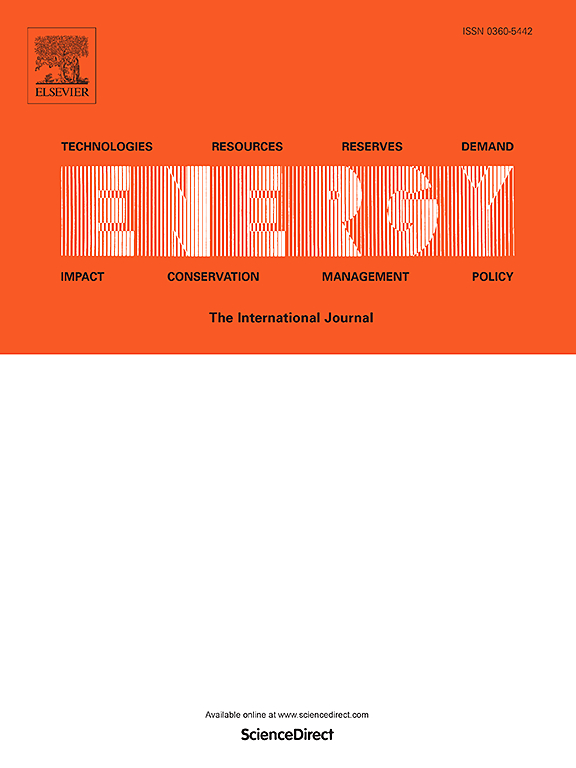Co-combustion of sewage sludge and high ash coal: Thermal behavior, ash formation behavior, interaction mechanisms and economic analysis
IF 9
1区 工程技术
Q1 ENERGY & FUELS
引用次数: 0
Abstract
Co-combustion of sewage sludge with high ash coal enables both waste valorization and sustainable disposal, yet its combined impacts on boiler efficiency, slagging risks, and economic viability require systematic investigation. This study developed a comprehensive evaluation system including combustion characteristics, operational safety, and techno-economic analysis to reveal the interactions between components and mineral evolution during sewage sludge-high ash coal co-combustion. The results demonstrated that blending sewage sludge significantly improved the ignition performance of high ash coal. When the sewage sludge blending ratio exceeded 50 %, combustion transitioned from a fixed carbon-dominant to a volatile-dominated mode. A 50 % sewage sludge blend (sewage sludge to high ash coal mass ratio of 5:5) achieved a comprehensive combustion characteristic index of 4.80 × 10−8, representing a 100.58 % enhancement compared with coal. Synergistic interactions enhanced the combustion efficiency of fixed carbon, as evidenced by a 25.12 % increase in the fixed carbon weight-loss rate for the 60 % sewage sludge blend, compared to theoretical predictions. Minerals (CaO, Fe2O3, AlPO4) exhibited dual catalytic-inhibitory regulation: optimal concentrations enhanced combustion via catalytic cracking and oxygen storage-release mechanisms, while excessive minerals promoted slag formation impeding oxygen diffusion, with the efficacy hierarchy following CaO > AlPO4 > Fe2O3. Ash chemistry analysis revealed that the addition of sewage sludge increased the alkaline oxide content, promoting silicate network depolymerization. At blending ratios exceeding 50 %, the ash deformation temperature sharply decreased to 1157 °C, increasing the risks of slagging. Economic evaluation indicated dynamic payback periods of 2.91 years for a 50 % blend and 7.67 years for a 60 % blend. Multi-objective optimization identified the optimal sludge-to-coal ratio as 5:5, achieving balanced improvements in combustion efficiency, ash fusion control, and economic viability. This study explores the feasibility of sewage sludge-high ash coal co-combustion, providing a new approach for intensive sewage sludge treatment.

求助全文
约1分钟内获得全文
求助全文
来源期刊

Energy
工程技术-能源与燃料
CiteScore
15.30
自引率
14.40%
发文量
0
审稿时长
14.2 weeks
期刊介绍:
Energy is a multidisciplinary, international journal that publishes research and analysis in the field of energy engineering. Our aim is to become a leading peer-reviewed platform and a trusted source of information for energy-related topics.
The journal covers a range of areas including mechanical engineering, thermal sciences, and energy analysis. We are particularly interested in research on energy modelling, prediction, integrated energy systems, planning, and management.
Additionally, we welcome papers on energy conservation, efficiency, biomass and bioenergy, renewable energy, electricity supply and demand, energy storage, buildings, and economic and policy issues. These topics should align with our broader multidisciplinary focus.
 求助内容:
求助内容: 应助结果提醒方式:
应助结果提醒方式:


